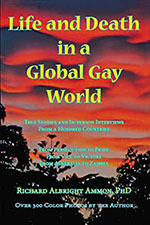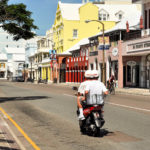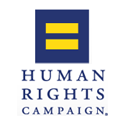A brief guest commentary by an academic observer reports on the homosexual patterns in this small country long wracked with civil war and politcal corruption. Add these problems to the common ‘gay’ troubles from a strong machismo culture and fervent Catholic bias and life does not appear too rosy for lesbigays here.
Also see:
Gay Nicaragua News & Reports 2006 to present
Gay Nicaragua
By Gert Hekma
Gay and Lesbian Studies
Amsterdam (e-mail hekma@pscw.uva.nl)
http://www.pscw.uva.nl/gl/intro.html
Introduction
Latin-America has a strong machismo-tradition with a division of active and passive roles: the maricones (queers) taking the passive/feminine roles and the macho’s the active/male roles. This dichotomy is an ideal type, as it seems to be common for a subcategory of macho’s to desire to be penetrated.
At the same time, Latin-America is since long strongly influenced by western models of homosexuality, so in most bigger cities exists also a gay culture of bars, journals and movements that is oriented on the United States and Europe. All shades of effeminacy are present: from the effeminate queers to drag queens and transsexuals.
Nicaragua has known recently a turbulent political history swinging from an ultraconservative (Somoza) to a communist (Sandinistas) regime while there is now a broad democratic coalition.
Under this new administration, the Catholic Church that is staunchly anti-homosexual, has gained influence. Perhaps to get the support of the church, the new government has introduced anti-homosexual legislation. This is an amazing development because the general trend, also in Latin-America, is of a stronger gay movement and more gay rights. The peculiar political and legal situation of Nicaragua will be certainly topic of research in some case studies.
The city of Managua, the capital of a million inhabitants where somewhat more than a quarter of the Nicaraguan population lives, has been struck by several devastating earthquakes, the last one in 1972 that completely destroyed the center of the city which has never been completely rebuilt.
1. Spaces
As there is no clear center to the city, gay spaces are spread over the city and miss a central focus. As the restructuring of urban spaces has been quite recent and only started recently, we will try to find out how certain places have become gay spaces. It has always been an enigma how spaces turn gay and in this case there might be histories or myths about the origin of homosexual spots.
The main places are nowadays the ruins of the cathedral, the Central Park, the Ruben Dario Theatre and along the shores of Lake Managua. These places are active from the late afternoon until eleven in the evening. But in fact, any place lends itself to homosexual encounters. It can happen on markets, street corners, in shopping centers, at bus stops. The three bars that exist nowadays, function as a kind of focus for a core group of western-style gays. But most of gay life is elsewhere, in the streets, parks and among the ruins of Managua.
2. Sexual border traffic.
The machismo-system in particular allows a strong sexual border traffic between at one hand the macho-men and at the other hand the maricones and also youth that are willingly or unwillingly involved in the erotic games of adult men. The system gives a clear structure to homosexual arrangements, but as is clear from the literature (Parker 1991; Lancaster 1992; Carrier 1995), in general men can find their own sexual niche in this system, being masculine but also gay or being macho but also interested in anal penetration.
Much depends on public appearance: as long as you look like a macho, other people will make no qualms about sexual digressions unless they have some good reason. Most people are aware of the limitations of the system and close an eye on transgressions that are kept private and silent.
3. Language.
Nicaragua knows a specific word for the Latin-American maricone, "cochon" that clearly stems from the French and means "pig". It is a very harsh word for passive gay men. As nothing is known about the specific Nicaraguan vocabulary, research has to be done in this field.
4. Identity and community.
There is no strong feeling of identity or community for men involved in homosexual behavior, except for the maricones who have a strong sense of identity and for the western style gays who have a sense both of identity and community. For them, there exist now three bars and two gay movements Nimehuatzin and Xochiquetzal while gay demonstrations have been held. The Indian names for the movement suggest a strong awareness of an Indian past that might have been more gay. Moreover, there are nowadays strong connections with the Nicaraguan community in the United States which has made gay representations widely available, ranging from pornography, journals to literature.
It has brought a certain self-consciousness to gay men in Managua. Maricones have also a sense of identity, but little sense of community as long as they are each other’s rivals in attracting macho men. It will be certainly part of the research to find out about the interactions between the different groups. For example, how well known are the western-style places among macho’s and maricones; what kind of meaning they attribute to these places; do the macho’s feel it as a threat that they might be defined as gay; and how do western-style gay men relate to the system of macho and maricone?
5. Gender.
With the system of macho and maricone, there is a clear gender divide. Latin- American cultures are known to be strongly gender-dichotomous and this works as well in the sexual sphere. There is a general awareness in the population of the more effeminate maricones and they are accepted as they are. They perform traditional women’s duties and have traditional female jobs such as working on markets, in bars and restaurants
6. Age.
Homosexual activity is the strongest among younger men who are not yet married. Girls have to remain virgins so the young men turn to each other for sexual outlets. Interestingly enough, this situation pertains although women’s liberation has made strong inroads in Nicaraguan society. Growing older, most young men marry and make an end to their homosexual experiments. Only maricones and western-style gay men continue to look for same-sex relations at an older age.
7. Sexual practices.
The sexual behavior is strongly modeled on a system of macho-men who penetrate maricones. As stated above, this system is the public face that hides what goes on in private. In privacy, the tables can be turned around. The main question for a real man is that his aberrant behaviors remain unknown in public. This puts the maricones in an ambivalent position. They have power over the men with whom they have sex because they know about his private sexual desires and are therefore dangerous to these men. But at the other hand, the men will always deny possible allegations of the maricones and denounce them as liars.
So there is both anxiety and distrust of the effeminate maricones who are considered to be both weak gossips and strong persons who tell the truth. It makes sexual relations between macho’s and maricones fraught with danger, also for the maricone who has to handle a man who can be strongly ambivalent about what he is doing. But in these dangers, strong desires can be awakened and intimate bondings formed.
















